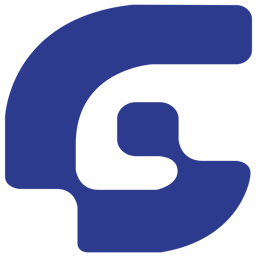How Discovery-Driven Design Helps Leaders Derisk Innovation
Good Ideas Only •
Discover the power of discovery-driven design in derisking innovation. This framework validates ideas, minimizes risk, and connects innovation to vision. Learn from Wayfair, Airbnb, and Spotify. Unlock new pathways for success. #Innovation #DiscoveryDrivenDesign
A Framework for Validating Product Ideas With Less Risk
Innovation is essential for business growth, but it's also inherently risky. As a product leader, you're tasked with balancing the need for innovation with the need to minimize risk. The discovery-driven design offers a powerful framework for validating innovative ideas before making major investments.
The discovery-driven design originated in the 1980s as a lean startup approach focused on thoroughly testing assumptions at each development stage. The core principles involve using experiments and prototypes to refine concepts, gain market feedback, and derive insights. Critical practices include identifying assumptions, defining tests to validate them, and integrating results into the next iteration.
The discovery-driven design recognizes that most new product ideas start with significant unknowns. Rather than make big bets early on, discovery-driven design uses an incremental, iterative approach to innovation. High-level assumptions are broken down into smaller validatable hypotheses. Tests expose flaws, reveal insights, and shape the evolution of the product concept.
The process begins by clearly defining the problem you want to solve and articulating assumptions around the proposed solution. Every element of the business model canvas becomes a potential area to test - from value proposition to customer segments to cost structure.
Low-fidelity prototypes and focused customer interviews provide early learning. As the concept develops, you design more elaborate pilots and beta tests to evaluate adoption and refine positioning. The cycle continues until major assumptions are validated, unknowns are minimized, and the path forward becomes clear.
Benefits for Product Leaders
Discovery-driven design shifts risk from the back-end of innovation to the front-end. By testing ideas quickly and cheaply, you avoid over-investing in product concepts that won't work in the market.
The approach gives you valuable data to guide decision-making and strategically direct resources. You gain firsthand customer feedback to supplement analysis and intuition. Validation builds confidence to move forward decisively on the initiatives with the most significant potential.
Perhaps most importantly, discovery-driven design connects innovation more tightly to vision. Taking an iterative, experimental approach, you can rapidly translate ideas into reality and unlock new pathways for achieving strategic goals.
Case Studies
Wayfair - Online Home Goods Retailer
Wayfair used discovery-driven design to develop its online home goods business model. They started testing assumptions by selling products on eBay to gauge demand. Customer feedback on pricing, shipping costs, product categories, and brands shaped their minimum viable product. After launching their site, Wayfair continued rapid iteration with A/B testing and customer input to optimize the shopping experience. This discovery-driven approach enabled Wayfair to disrupt the traditional furniture retail industry.
Airbnb - Peer-to-Peer Accommodation Platform
Airbnb's founders knew the sharing economy space had potential but many unknowns around customer needs and behavior. They interviewed hundreds of hosts and guests to develop initial persona profiles. Low-fidelity tests helped them identify three key factors for success - trust, convenient booking, and a critical mass of listings. Airbnb designed features and policies to address these areas, launched at SXSW to gain traction quickly, and continued refining based on user feedback. Their discovery-driven process was crucial for developing a peer-to-peer model that would work at scale.
Spotify - Music Streaming Service
Spotify used discovery-driven design to shift their streaming service from a download-based experience to a fully ad-supported model. They identified assumptions around willingness to stream vs download music and pay for ad-free access. Spotify then designed multiple experiments - from free to paid subscriptions and various limits on ad frequency. Analyzing trial conversions and subscriptions enabled them to find the right features, pricing, and ad delivery mix to create a sustainable business model. The insights from their discovery-driven approach laid the foundations for their rapid growth.
The discovery-driven design offers a proven framework to derisk innovation and uncover the full potential of new ideas. The future is undiscovered - but thoughtful testing can illuminate the path forward. Use discovery-driven design to take the long view, probe assumptions, and pave the way for innovation breakthroughs. If you know where to look, there are always more great ideas to uncover.
Seize the future. Let's make your ideas real.
Good Ideas Only
Copyright © 2023 Good Ideas Only, Inc. All rights reserved.




